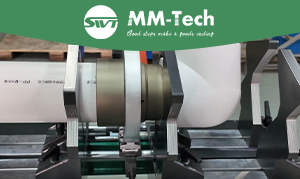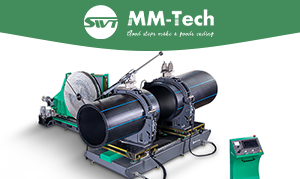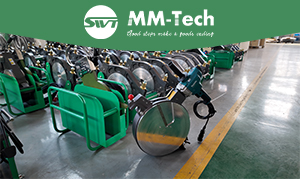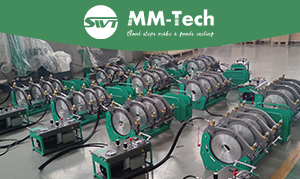
You see more builders picking HDPE in workboat construction now. It is strong and can take hits without breaking. It bends a little and lasts a long time. The material you pick can make your boat safer. It can also help your boat last longer and work better.
Advanced plastics like HDPE in workboat construction need less fixing than steel or wood.
These plastics do not rot, rust, or get hurt by the sun. This helps your workboat last longer.
Light plastics like HDPE in workboat construction help you use less fuel and spend less money.
Being tough against hits keeps your crew and boat safer on the water.
Key Takeaways
HDPE is strong and bends easily. It keeps workboats safer. It can take hits and does not break easily.
Picking HDPE saves money over time. It needs less fixing and care than steel or wood.
HDPE boats weigh less. This helps save fuel. They can carry more things. This makes them cheaper to use.
The material is good for the environment. It can be recycled. It does not need harmful paint. This helps keep the ocean safe.
HDPE lasts a long time and needs little care. It is a smart choice for workboats. It helps boats last longer and work well in hard places.
Material Choice in Workboat Construction
Choosing the right material for workboat construction shapes how your vessel performs on the water. You want your boat to last, stay safe, and work well in tough conditions. The material you pick affects every part of your workboat construction, from how it handles impacts to how much you spend over time.
Safety Factors
You need to think about safety first in workboat construction. Some traditional materials, like steel or wood, can get weak over time. Steel may rust, and wood can rot. These problems can make your boat less safe. HDPE offers a new choice for workboat construction. It does not rust or rot. It can take hard hits without breaking. This means you and your crew stay safer, even in rough waters. You also avoid sudden repairs that could put you at risk.
Tip: Always check the safety record of any material before you use it in construction.
Lifecycle Costs
When you look at costs, you should not just think about the price to build your boat. You need to look at the full life of your workboat construction. Traditional materials often need more repairs and upkeep. You may need to paint, treat, or fix them often. These costs add up over the years. HDPE changes this picture. It needs less care and fewer repairs. You save money on maintenance and downtime. Over time, this can make a big difference in your budget.
Material Type | Upkeep Needed | Common Issues | Long-Term Cost |
|---|---|---|---|
Steel (traditional) | High | Rust, corrosion | High |
Wood (traditional) | High | Rot, pests | High |
HDPE | Low | Few | Low |
You can see that your choice in workboat construction will affect both safety and cost. Picking the right material helps you get the most value and peace of mind.
HDPE in Workboat Construction: Performance
Impact Resistance
When you choose a material for your workboat, you want it to handle bumps and hits. HDPE in workboat construction gives you strong impact resistance. This means your boat can hit docks, rocks, or floating debris and still keep its shape. Steel and aluminum can dent or bend when they get hit. Fiberglass can crack. High-density polyethylene absorbs shocks better. You get fewer dents and less damage. This keeps your boat safe and helps it last longer. Many builders now trust hdpe in workboat construction because it protects both the boat and the crew.
Note: Impact resistance is important for workboats that work in busy or rough waters.
Flexibility
Flexibility helps your boat handle stress without breaking. HDPE in workboat construction stands out because it bends instead of snapping. This makes it a smart choice for tough jobs. You can see how flexible it is by looking at the modulus of elasticity. This number shows how much a material can bend before it breaks.
Material | Modulus of Elasticity (GPa) |
|---|---|
HDPE | |
Steel | 200 or more |
Steel is very stiff. It does not bend much before it breaks. HDPE is much more flexible. This means your workboat can take hits and keep going. Flexibility also helps with durability. Your boat can last longer because it does not crack or break as easily. High-density polyethylene lets you work in rough places without worrying about sudden damage.
UV & Chemical Resistance
Workboats spend a lot of time in the sun and water. Sunlight and chemicals can damage many materials. Wood can rot. Steel can rust. Fiberglass can fade or weaken. HDPE in workboat construction gives you strong protection against both UV rays and chemicals. High-density polyethylene does not break down in sunlight. It also resists fuel, oil, and saltwater. You do not need to paint or coat it to keep it safe. This adds to the durability of your workboat.
Recent advances in hdpe in workboat construction make these boats even better. Here are some new ideas that help:
The collaboration between Damen and CEAD is exploring large-format 3D printing for HDPE workboats, which enhances design flexibility and sustainability.
The use of fiber-reinforced composites in workboat construction improves performance and environmental sustainability.
These new methods help you get a boat that lasts longer and works better. You spend less time fixing your boat and more time getting the job done.
Weight & Safety in Workboats
Lightweight Benefits
You want your workboat to move easily and carry more. HDPE helps you do both. This material weighs much less than traditional options. In fact, HDPE boats weigh about 30% less than fiberglass boats. This lighter weight brings you several clear benefits:
You use less fuel on every trip. Lighter boats need less power to move, so you save money and help the environment.
You can carry more cargo or equipment. The boat’s weight does not eat up your payload limit.
You find it easier to launch, recover, or transport your boat. Lighter boats need less heavy equipment and fewer people.
Tip: Choosing a lighter boat can lower your operating costs and make your work easier every day.
A lighter boat also handles better in the water. You can turn faster and stop more quickly. This helps you stay safe, especially in busy or tight spaces.
Buoyancy
HDPE gives your workboat strong natural buoyancy. This means your boat floats higher and stays more stable, even when loaded. The closed-cell structure of HDPE keeps water out. Your boat will not soak up water, warp, or get heavy over time. You do not have to worry about rust or rot, which can weaken other materials.
HDPE’s buoyancy improves safety for you and your crew. The boat stays steady, even in rough water. If you hit something, HDPE absorbs the impact and keeps its shape. This flexibility helps prevent cracks or breaks that could cause leaks. You get a boat that stays safe and strong, trip after trip.
HDPE’s buoyancy also helps with fuel efficiency and maneuverability. Your boat glides over the water with less drag. You spend less on fuel and get where you need to go faster. For workboats, these features make HDPE a smart and safe choice.
Maintenance for HDPE Boats vs Traditional Materials
Surface Upkeep
You want a workboat that stays in good shape with little effort. HDPE boats make this easy. You do not need to paint them. Steel and aluminum boats need regular painting to stop rust and corrosion. Fiberglass boats need coatings to protect them from water and sun. HDPE does not rust, rot, or absorb water. This means you spend less time and money on upkeep. You do not have to worry about peeling paint or rust spots. The surface of HDPE stays strong and smooth, even after years of use. You save money because you do not need special coatings or treatments.
Tip: HDPE boats let you skip the hassle of yearly painting and surface repairs.
Marine Growth Resistance
Marine growth can slow down your boat and make it less efficient. HDPE helps you fight this problem. The hull of an HDPE boat is smooth, so marine organisms have a hard time sticking to it. You do not need to scrape off barnacles or algae as often as you would with steel or fiberglass boats. HDPE also resists rot, rust, and UV damage. You do not need to use harsh chemicals or antifouling paints to keep your boat clean. This makes HDPE a low-maintenance and eco-friendly choice.
You do not need regular cleaning or antifouling treatments.
The material resists rot, rust, and sun damage.
Repairs
When your boat needs repairs, you want a quick and simple fix. HDPE boats make repairs easy. You can fix most damage with a simple welding process. Local repairs are possible, so you do not need to send your boat away or hire special tradesmen. Aluminum repairs often take longer and cost more because they need skilled workers and sometimes full disassembly. Fiberglass repairs are possible in the field, but they still take more time than HDPE.
Material | Repair Time | Repair Cost | Repair Method |
|---|---|---|---|
HDPE | Lower | Lower | Simple welding process, local repairs |
Aluminum | Higher | Higher | Skilled tradesmen, not field feasible |
FRP | Moderate | Moderate | Semi-skilled workers, minor field repairs |
You save time and money with HDPE. You get back on the water faster and spend less on repairs.
Environmental Impact of Workboat Construction
Sustainability
You want your workboat to last a long time. You also want to help the environment. HDPE boats let you do both things. Picking HDPE means you hurt the planet less. Making HDPE uses less energy than making steel or aluminum. HDPE has a carbon footprint five times lower than aluminum. You do not need to use toxic paints or coatings. These chemicals can hurt water and animals. HDPE does not need these treatments, so the water stays cleaner.
HDPE is made from safe materials.
You do not need harmful antifouling paints.
HDPE boats help you lower your carbon footprint.
HDPE helps keep workboat construction sustainable. You get a strong boat and help protect nature.
Recyclability
When your boat gets old, you want to know what happens next. HDPE gives you a good answer. You can recycle old HDPE boats into new boats or other things. This keeps old boats out of landfills and cuts down on waste. Fiberglass is much harder to recycle. Steel and aluminum can be recycled, but they still hurt the environment more.
Old HDPE boats can be fully recycled.
Recycling HDPE helps you make less waste.
HDPE boats are smart for you and the planet.
Note: Picking recyclable materials helps keep the earth clean for future generations.
HDPE is a material that helps you and the environment. You make a good choice when you pick HDPE for your workboat.
Cost Comparison: HDPE vs Traditional Materials
Upfront Costs
HDPE workboats can cost more at first than some other boats. The material is pricier than wood or fiberglass. You also pay for special ways to build the boat. But you get a lot for your money. HDPE boats are ready to use right away. You do not need to buy extra coatings or treatments. You skip paying for paint, rust-proofing, or sealants. So, your first payment covers more than just the boat’s body.
Tip: Check what comes with the price. HDPE boats often have fewer extra costs.
Long-Term Value
You want a boat that lasts and saves you money. HDPE workboats give you good value over time. They do not rust or let marine growth stick easily. You spend less on cleaning and fixing them. You do not have to worry about rot or rust. This helps your boat work longer and keeps you from losing time and money.
Here is a table to show the differences:
Feature | HDPE Workboats | Traditional Material Workboats |
|---|---|---|
Durability | High, withstands harsh environments | Varies, often less durable |
Maintenance | Low, minimal upkeep required | Higher, regular maintenance needed |
Lifespan | Longer, designed for longevity | Shorter, may require replacement sooner |
Resale Value | Higher, due to durability and demand | Lower, often depreciates faster |
Operational Costs | Lower, due to recyclability and efficiency | Higher, often includes more repairs |
HDPE gives you these extra benefits:
You spend less on upkeep.
You can recycle the boat, which helps resale value.
If you want to save money over your boat’s life, HDPE is a smart pick. You skip many problems that make steel, wood, or fiberglass cost more. Your boat keeps its value and is always ready for work.
Addressing Concerns in HDPE Workboats
Industry Adoption
You might wonder how many companies use HDPE now. The maritime industry is starting to see its benefits. More builders are picking HDPE for new boats. CEAD and Damen work together on 3D printed HDPE workboats. This shows big companies trust HDPE for strength and design options. Tideman Boats also makes strong HDPE workboats and sees more buyers. Companies want boats that last longer and cost less to fix. Using 3D printing with HDPE saves money and helps the environment.
CEAD and Damen work together on 3D printed HDPE workboats.
Tideman Boats makes strong HDPE workboats for more buyers.
3D printing with HDPE saves money and helps the planet.
There are still some problems. Not many people know about HDPE boats yet. Builders need special tools to shape and weld HDPE. These things slow down how fast people use HDPE, but more people are getting interested as they learn about its good points.
Application Suitability
HDPE works well for many kinds of workboats. You get good results in patrols, port jobs, surveys, diving, fishing, rescue, passenger trips, and fun trips. HDPE boats do hard jobs and keep crews safe. They do not work as well for fancy boats or boats over 15 meters. Bigger or fancy boats often need other materials for looks or strength.
Application Type | Suitability |
|---|---|
Patrols | Highly Suitable |
Port Operations | Highly Suitable |
Surveys | Highly Suitable |
Diving Operations | Highly Suitable |
Fishing | Highly Suitable |
Rescue Operations | Highly Suitable |
Passenger Transport | Highly Suitable |
Recreation | Highly Suitable |
Luxury Boats | Less Suitable |
Vessels over 15 meters | Less Suitable |

You might see a few downsides. HDPE boats do not have many color choices. They can scratch easier than metal or fiberglass. These things do not hurt safety or how the boat works, but you should think about them before you pick a boat.
Note: HDPE fits most workboat needs, but check if it works for your job before you choose.
You get lots of good things when you pick HDPE for your workboat. HDPE keeps your boat safe because it can take hard hits. It is easy to care for and does not need much fixing. HDPE also helps keep you and your crew safer on the water. You help the planet too, since HDPE can be recycled and is better for nature.
HDPE is lighter than old materials, cutting weight by half.
It does not get damaged by chemicals or rust, so you fix it less.
HDPE lasts a long time and works well with new things like quiet electric motors.
The marine world is now using more HDPE because it is strong and good for the earth. Picking HDPE means you are ready for the future and making a smart choice.
FAQ
What makes HDPE boats different from traditional boats in the marine industry?
HDPE boats are not like regular boats. They use marine-grade polyethylene. This plastic is tough and does not break easily. It stands up to bumps, sunlight, and chemicals. You do not need to fix them much. They cost less to use over time. The marine industry likes that you can recycle them. They are better for the earth and help keep the water clean.
Are HDPE boats suitable for all marine applications?
You can use HDPE boats for most workboat jobs. They do well in patrol, rescue, and survey work. Marine-grade polyethylene works best for boats under 15 meters long. Bigger boats may still need other materials for extra strength.
How does HDPE help with efficiency and low operating costs?
HDPE boats are lighter than regular boats. This means you use less fuel. You can carry more things on each trip. These boats are easy to take care of. You do not spend much money fixing them. This helps your workboats last longer and saves you money.
Is HDPE environmentally friendly and recyclable?
HDPE boats are good for the environment. Polyethylene can be recycled into new things. You do not need to use harmful paints or coatings. These plastics help keep the ocean clean. They make less waste and protect sea animals.
What maintenance do HDPE boats require compared to traditional boats?
You do not need to do much to keep HDPE boats in shape. They do not rust, rot, or get covered in marine growth. You do not have to paint them or use strong cleaners. Marine-grade polyethylene is easy to fix if it gets damaged. Your workboats stay ready with very little work.









